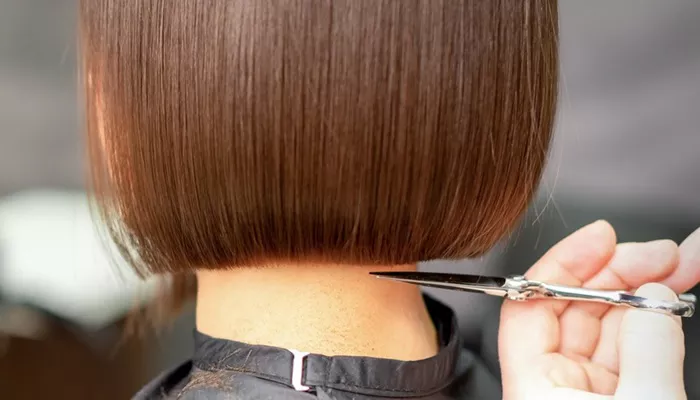Maintaining short hair can be both stylish and practical, but it requires regular care to keep it looking sharp. Unlike long hair, which can hide split ends or uneven growth, short hair loses its shape quickly.
This guide will explore how often you should cut short hair, factors that influence frequency, and tips to keep your style fresh.
Why Regular Haircuts Matter for Short Hair
Maintains Shape and Style
Short haircuts rely on precise lines and structure. As hair grows, the shape blurs, making the style look messy. Regular trims prevent this.
Prevents Split Ends
Split ends travel up the hair shaft faster in short hair due to less length to weigh them down. Trimming stops damage before it spreads.
Promotes Healthy Growth
Healthy ends allow hair to grow stronger. Neglecting cuts leads to breakage, making hair appear thinner.
Factors That Determine How Often to Cut Short Hair
Hair Growth Rate
Hair grows about 0.5 inches (1.25 cm) per month. If your style depends on exact length (e.g., a buzzed fade), you may need cuts every 2–3 weeks. Slower growers might wait 6–8 weeks.
Haircut Style
- Pixie Cut: Needs trimming every 4–6 weeks to keep layers defined.
- Bob Cut: Blunt bobs require trims every 6–8 weeks; textured bobs can wait 8–10 weeks.
- Undercut or Fade: Sharp lines fade quickly; visit the salon every 2–3 weeks.
Hair Texture
- Straight Hair: Shows uneven growth easily. Trim every 4–6 weeks.
- Wavy/Curly Hair: Curls hide imperfections. Trim every 8–12 weeks.
- Coily/Kinky Hair: Less frequent cuts (every 12–16 weeks) due to slower growth and protective styles.
Lifestyle and Habits
- Heat Styling: Frequent blow-drying or flat ironing damages ends. Trim every 4–6 weeks.
- Swimming/Sun Exposure: Chlorine and UV rays weaken hair. Cut every 6 weeks.
- Chemical Treatments: Coloring or perming requires trims every 6–8 weeks to manage damage.
Recommended Cutting Frequency by Style
Pixie Cut
- Ideal Schedule: 4–6 weeks
- Why: Layers lose definition quickly. Bangs may cover eyes if untrimmed.
Blunt Bob
- Ideal Schedule: 6–8 weeks
- Why: Blunt ends become uneven; the “helmet” effect appears if too long.
Undercut or Fade
- Ideal Schedule: 2–3 weeks
- Why: Sharp lines around ears/neck blur fast.
Textured Crop
- Ideal Schedule: 8–10 weeks
- Why: Messy styles are more forgiving.
How Hair Texture Affects Trim Needs
Straight Hair
Shows every millimeter of growth. Schedule trims at the first sign of bulkiness.
Wavy Hair
Waves disguise split ends but can become frizzy. Use light products and trim every 8 weeks.
Curly Hair
Shrinkage makes hair look shorter, so trims every 10–12 weeks focus on shape, not length.
Coily/Kinky Hair
Prioritize moisture and protective styles. Trim only when ends feel dry or tangled.
Lifestyle Considerations
- Active Lifestyles: Sweat and hats flatten styles. Trim every 4–6 weeks.
- Heat Styling: Use heat protectant and cut split ends monthly.
- Chemicals: Deep condition regularly and trim damaged ends.
Signs You Need a Trim
Your Hair Feels “Puffy”
Weightless ends create unwanted volume.
Styling Takes Longer
Frizz or cowlicks emerge as hair loses shape.
Split Ends Are Visible
White dots or frayed ends mean it’s time.
Tips to Extend Time Between Cuts
Use Sulfate-Free Shampoo
Prevents dryness and breakage.
Avoid Over-Styling
Let hair air-dry when possible.
Apply Leave-In Conditioner
Keeps ends hydrated.
Common Mistakes to Avoid
Waiting Too Long
Overgrown hair requires drastic cuts, losing progress.
DIY Trims
Uneven results can ruin the style.
Ignoring Texture
Curly hair cut like straight hair may look uneven.
Conclusion
Short hair demands attention but rewards you with bold style. Most styles need trims every 4–8 weeks, depending on cut, texture, and habits. Watch for signs of wear, protect hair from damage, and consult your stylist for personalized advice. With consistent care, your short hair will always look its best.
Related topics:
Will Cutting My Hair Short Make It Thicker
Should I Cut My Hair Short If It’s Frizzy?
Top 5 Conditioners That Work for Every Hair Type


